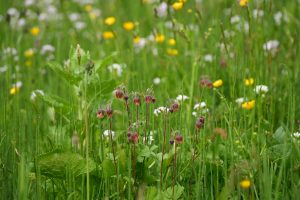Plannning, Placemaking, and Nature Positive Solutions
Exploring best practice in planning, placemaking and nature-positive solutions for developing and regenerating the built environment.
Planning
The Good Homes Alliance has a Network of Vanguard Local Authorities who lead the way in planning for Net Zero, despite decades of underinvestment from central government and frequently moving goal posts, from Written Ministerial Statements that seek to reduce the ability of local authorities to set standards for their area, to proposed housing regulations that fall short of Net Zero requirements.
Our work with these local authorities has resulted in the GHA’s Net Zero Planning Policy Hub.
Although the planning system is frequently blamed for development woes in England and Wales, it is also the primary means of both regulating and enabling the delivery of development. At its best, it supports democratic, meaningful engagement and works for the public benefit by prioritizing action on climate change, pushing for better design and build quality, and enabling evidence-based nature-positive solutions.
Planning is a key mechanism for achieving many of the GHA’s priorities, which include the delivery of healthy homes and places (see guidance on overheating, shading, and water use); energy supply and demand reduction and different housing types, tenures and construction methods – along with associated land and viability issues – through our focus on alternative housing models and innovative finance.
Placemaking
In addition to planning, placemaking is integral to the delivery of good homes, from the location of new development to the provision and maintenance of people-friendly streets and green spaces. GHA members (including Local Authorities, SME developers, architects, designers, consultants, environmental specialists, modellers, researchers and suppliers) are involved in placemaking activities around the UK. Our focus is on:
- Sustainable, low carbon development that puts people before profit.
- Climate adaptation measures to increase the resilience of our towns and cities.
- Places that respond to their context, maximise on-site renewable energy and use energy management/storage solutions to meet demand, and prioritise biodiversity and ecological improvements.
Nature-Positive Solutions
There is a growing body of evidence for the use of nature-based solutions in strategic spatial planning and placemaking in response to the climate crisis, and there is recognition in policies for nature recovery that the habitat and wildlife depletion of the last 50 years must be reversed.
In recent years, this has led to the concept of ‘nature-positive places’ that emphasises a landscape-based approach to improve air quality, reduce the urban heat island effect, manage water and address habitat fragmentation and biodiversity loss.
Key aspects include a focus on green and blue infrastructure (ecological corridors and green spaces such as community gardens, parks, and streets), sustainable urban drainage systems and increased scrutiny within the built environment supply chain.

Ecological landscapes: from individual green spaces to shared green infrastructure
Green infrastructure in spatial planning: keystone plants, maintenance of green spaces, water management, ecosystem services and quality of life.
 Climate adaptation in placemaking and building design
Climate adaptation in placemaking and building design
Strategies for adapting to climate change: planning, designing and building climate resilient homes and places.
